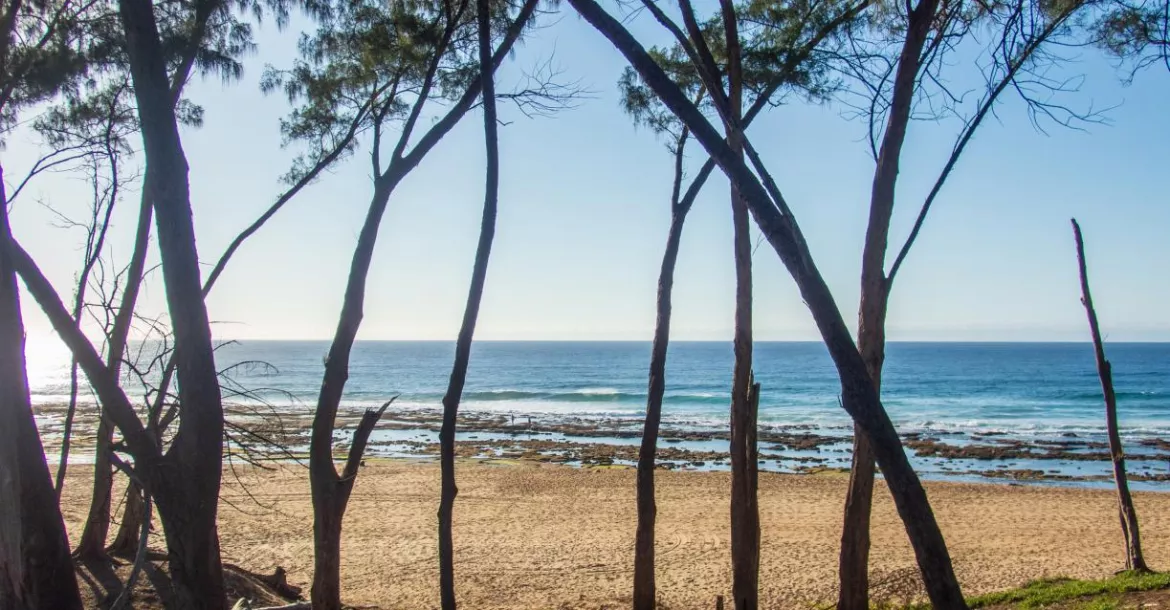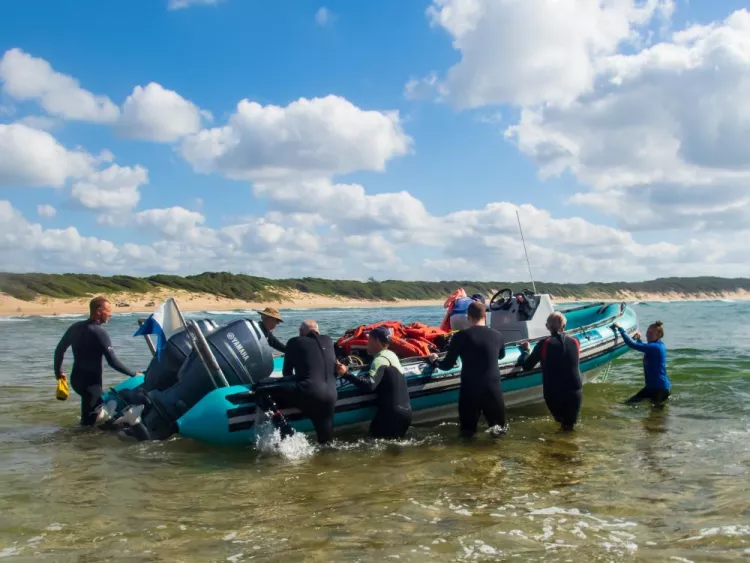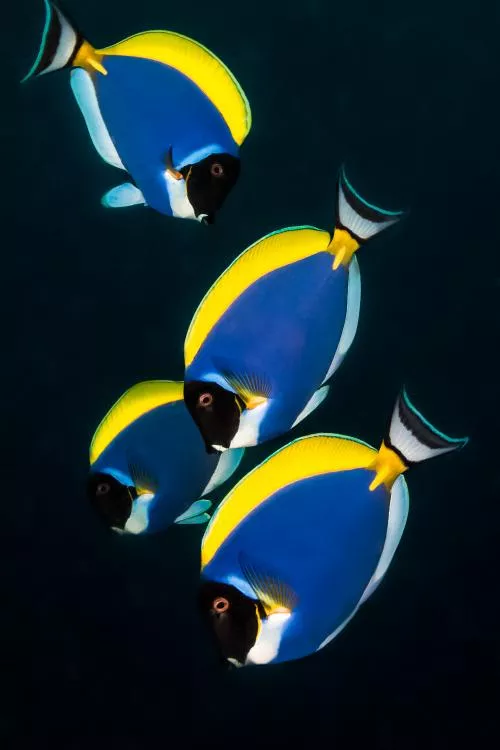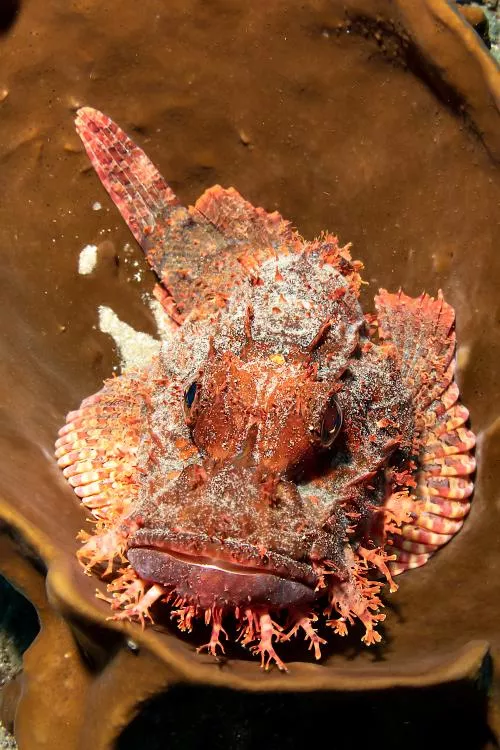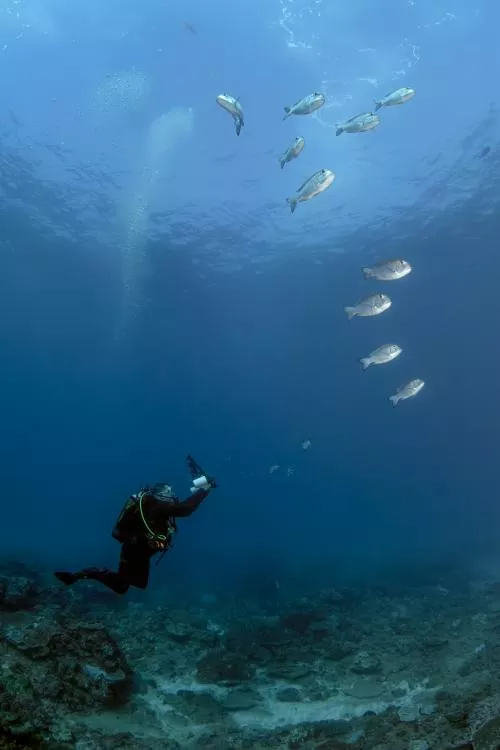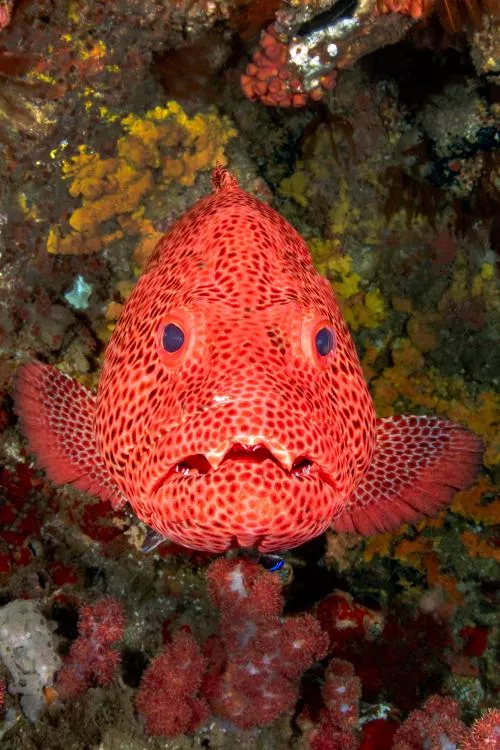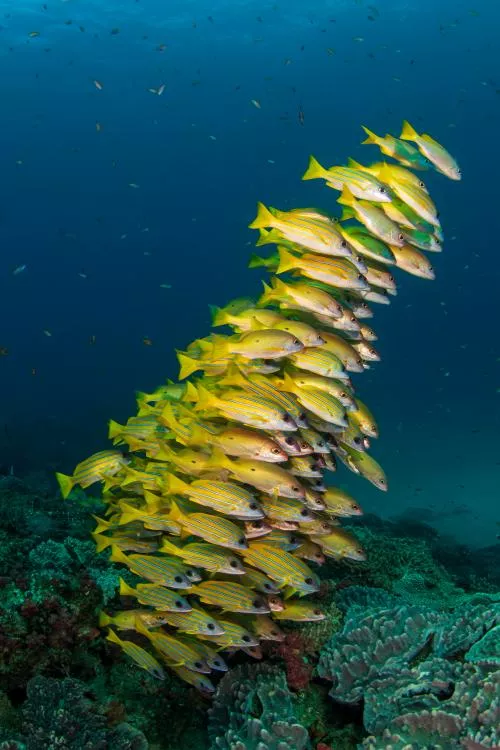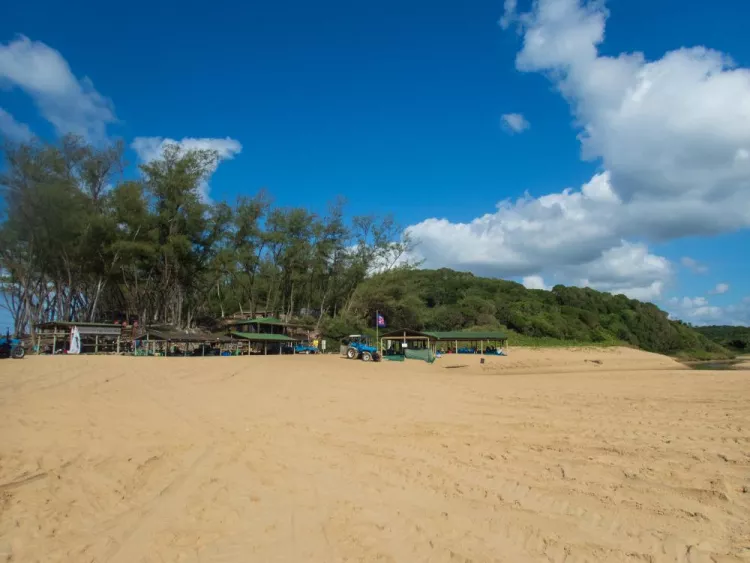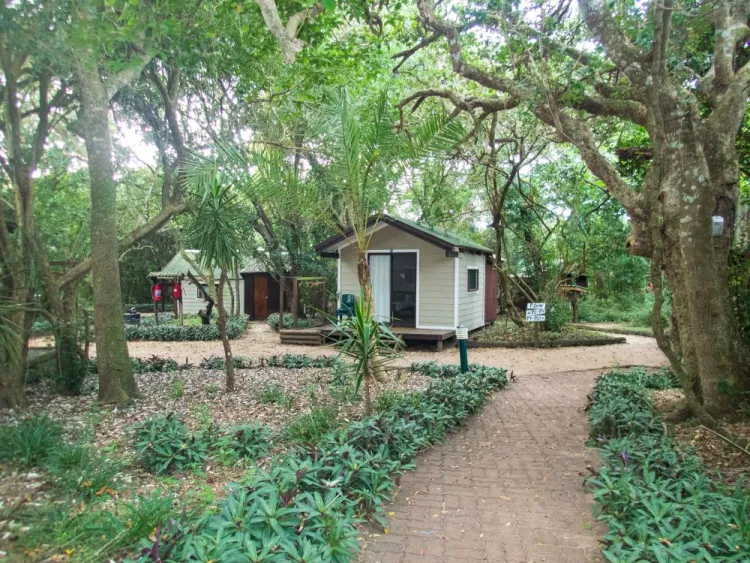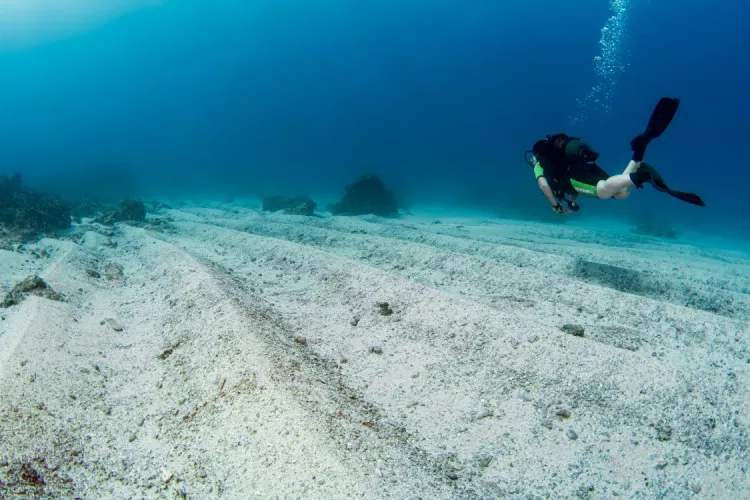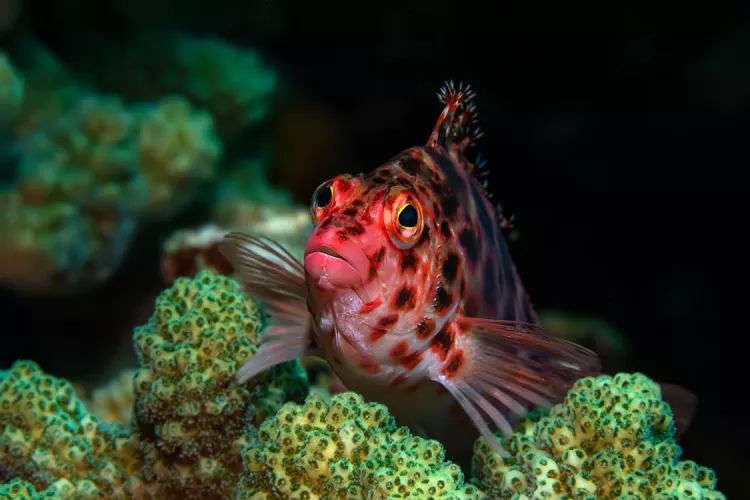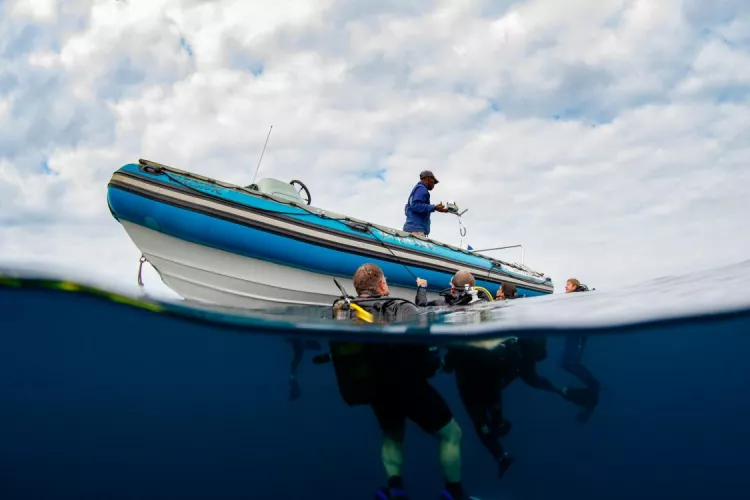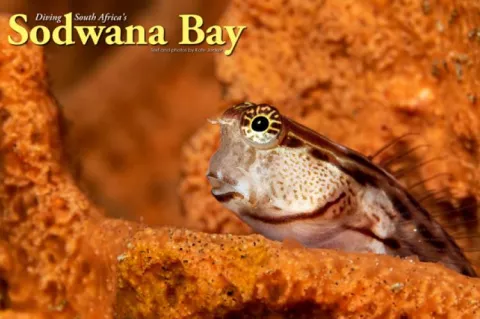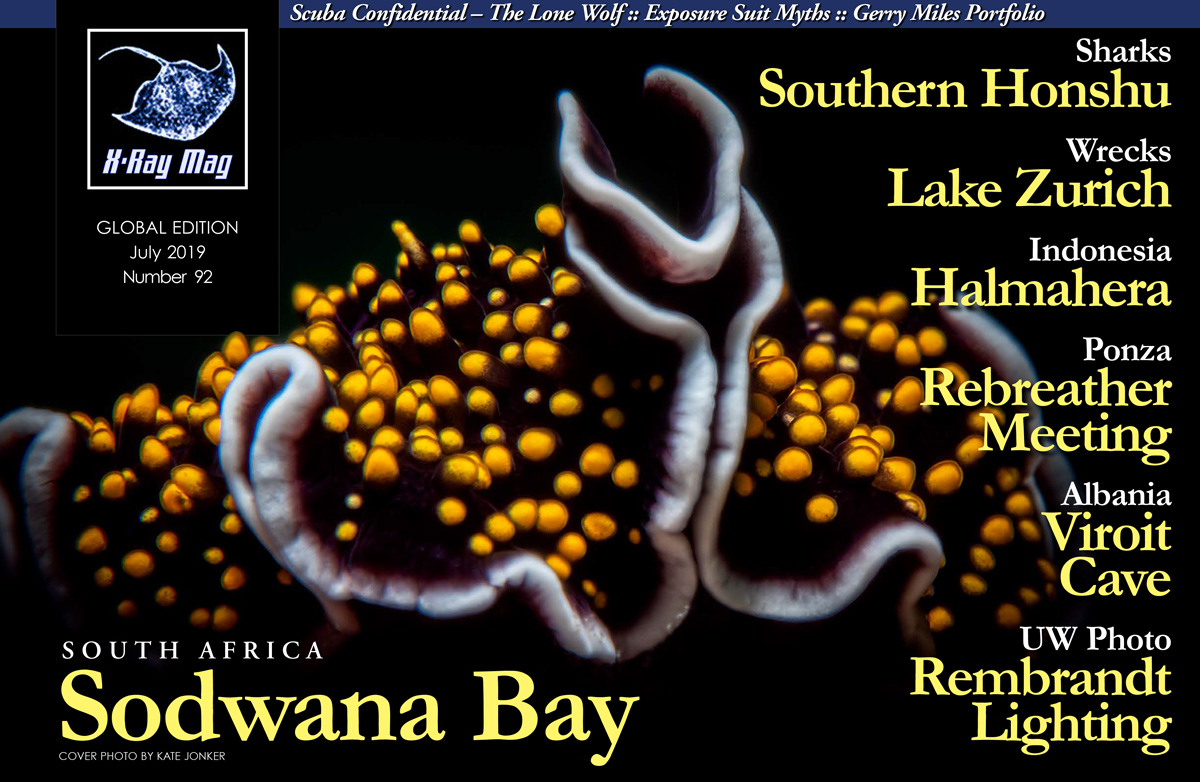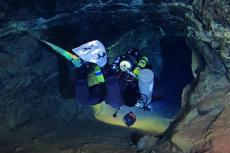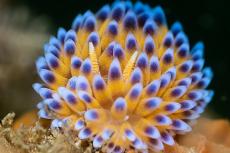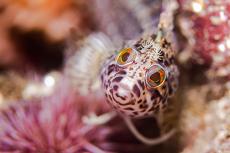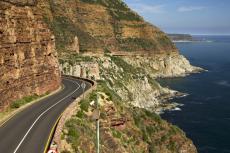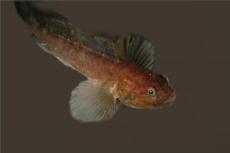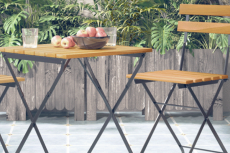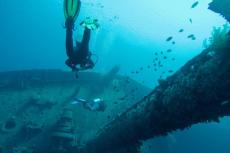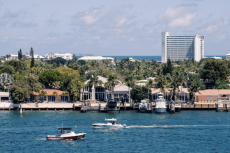The name “Sodwana” comes from the Zulu words Siso dwana, which mean “us alone.” History has it that a group of Zulu women were harvesting mussels on a deserted stretch of beach along the northern coast of KwaZulu-Natal when a landing party for the British Royal Navy came ashore and asked them who they were and what they were doing there. Not understanding this strange language, the ladies replied “Siso dwana” (“us alone”) and from that day, this beautiful piece of unspoilt coastline has been known as Sodwana Bay.
Contributed by
Factfile
Kate Jonker is an underwater photographer and writer based in South Africa.
She teaches underwater photography, is a dive guide and dive boat skipper for Indigo Scuba in Gordon’s Bay, and leads dive trips across the globe.
For more information, please visit: katejonker.com.
Being just over 400km north of Durban on the eastern coast of South Africa, and off the beaten track, the area was left somewhat unexplored until the late 1940s. Recognising its rich diversity in flora and fauna both along the coastline and beneath the waves, the then Natal Parks Board proclaimed Sodwana Bay a nature reserve in 1950.
Today, Sodwana Bay forms part of the iSimangaliso Wetland Park, which is South Africa’s first UNESCO World Heritage site and South Africa’s largest marine protected area (MPA).
The iSimangaliso MPA provides safe nesting grounds for endangered leatherback and loggerhead turtles, and its submarine canyons are home to the incredibly rare coelacanth, a fish that has been around since the time of the dinosaurs.
Sodwana Bay is a year-round diving destination, and the best way to get there is to fly to King Shaka International Airport in Durban and hire a car or arrange a transfer through the resort you will be staying with. A five-hour drive along the main highway will take you through lush green scenery of sugar cane fields, blue gum forests and pineapple plantations. Once off the main highway, you might see giraffe, zebras, warthogs and other small animals that can be found in the many game reserves that border the road. The trip is made even more exciting as herds of cattle grazing along the roadside seem to take an innate pleasure in crossing the road just as you reach them.
This is Africa!
The resort
The small settlement of Sodwana Bay comprises a handful of dive operations, restaurants, bars and guest lodges. There are also a couple of dive resorts located inside the iSimangaliso Wetland Park, and on a recent trip there, I chose to stay at one of these.
After checking in, I was taken down a shady path to my accommodation, a well-maintained little wooden chalet nestled amongst the trees that form part of Sodwana Bay’s coastal forest. A large glass sliding door lead out onto a little deck. As I unpacked, I could hear birds singing in the trees while boisterous vervet monkeys chattered as they watched me from the branches above. Just when I thought it could not get any better, a tiny red deer ran across the path in front of my chalet and a huge family of mongoose dashed past, stopping briefly to check me out. I really felt as if I was at one with nature.
The dive operator
It was with great excitement that I climbed aboard the special tractor-drawn trailer early the following morning to go down to the beach. After a ten-minute ride through the dense, jungle-like forest, we arrived at the beach and stopped at the large gazebo that belonged to our dive resort. Before I could step off the trailer, a friendly beach assistant called Steven was smiling and shaking hands with me in true African style, telling me he would look after my gear for the week. We settled on a fee and from there on, my gear was his gear and he handled it professionally and with kid gloves.
Whilst our dive boat was being loaded, our divemaster, Tim, briefed us thoroughly on the diving and safety procedures at Sodwana Bay and gave us a detailed description of the reef we would be diving.
In Sodwana Bay, the boats launch from the beach through the waves and take divers to the many reefs that are named after their distance from Jesser Point, the rocky outcrop that provides reasonably protected launching at Sodwana Bay, and probably where the Zulu ladies were found harvesting mussels by the Royal Navy. Some of the reefs are quite large and many have a number of different dive sites located on them.
The reefs
The reefs of Sodwana Bay are formed from fossilised sand dunes, which are densely covered with pristine hard and soft tropical corals. These are the world’s most southerly coral reefs after those of Lord Howe Island just off the eastern coast of Australia.
The corals in Sodwana Bay thrive on the nutrient-rich water that flows up from the deep canyons close to shore, during a process called upwelling. In turn, the reefs provide a healthy habitat for a diverse and vibrant marine life—from tiny nudibranchs, tropical fish and pelagics, to larger visitors such as manta rays and whale sharks.
The beach launch
After our briefing, we walked down to our 6m-long semi-inflatable RIB (zodiac) where our gear was safely secured to a dive rack, which ran down the middle of the boat. A tractor driver pushed the boat into the water using a long metal pole. In other beach-launch destinations, it is quite common for the divers to have to turn the boat around and push it into the water themselves—so this was a breeze!
Our skipper George shouted “Mamas up!” and the female divers hauled themselves up over the pontoons and onto the boat. As soon as the boat was afloat, the male divers were asked to climb on board. We were all handed life jackets (a safety precaution for beach launches in South Africa), and George started up the motors and skilfully steered us through the waves. Once through the waves, we handed our life jackets back to George, who stowed them and took us out to our dive site.
George and most of the other skippers have grown up in the area and have worked their way up from being beach assistants, like my friend Steven, to the prized position of boat skipper. They become one with their boats and with the ocean—they know exactly when to go through the waves and when to hold back, and where the dolphins can be seen on the way to and from the dive sites.
The diving
Our first dive was at the largest reef system in Sodwana Bay, known as Two Mile Reef. Being only two miles from Jesser Point, it was a quick ride out. Before long, we were putting on our gear and getting ready to enter the water. Whilst I rinsed my mask, I marvelled at the warmth of the ocean and how I could clearly see the coral reef below me at 16m. George counted us down and we rolled backwards into the clear blue Indian Ocean.
The reef below us was festooned with a confetti of orange, pink and purple anthias as they hovered over the corals. Parrotfish bobbed up and down with their unmistakable style of swimming, their beaks grinning at everyone they saw. There seemed to be cleaning stations under every little overhang and above every table coral, with little cleaner wrasse and even larger wrasses grooming the many fishy inhabitants on the reef.
It was absolutely beautiful. I floated in the gentle surge, amongst the corals and fish, marvelling at the magnificence of this underwater world. Sadly, all too soon, our dive was over and we had to ascend to do our safety stop.
We all clambered back onto the boat, chattering excitedly about what we had seen and how warm the water was. George steered us carefully back to land, where the boat came to a stately halt on the beach. Steven came to pick up my gear, which was loaded onto the back of a pickup truck and returned to the gazebo where it was kitted up for the next dive. All we had to do was check our air, and our gear was whisked away to our boat for the next dive.
During our surface interval, we walked up to the little restaurant at the top of the hill that overlooked the bay and relaxed over cups of coffee and delicious snacks.
Our next dive was at another dive site on Two Mile Reef called Wayne’s World, and it was just as beautiful as our previous dive. We spent over 60 minutes exploring and watching the life on the reef and trying to capture it all on camera.
Friendly service and atmosphere
Most dives are done in the morning with launches at 7:00, 8:30 and 11:30 a.m. As we were only doing two dives a day, Steven took care of my gear, washed it and hung it up to dry overnight, so it was ready for me to check and use the following morning.
The rest of the afternoon was spent enjoying a leisurely lunch at the resort’s outside restaurant, lounging beside the pool, going through photographs, trying to identify what we had seen, and discussing where we would like to dive the following day.
The rest of our days followed a similar routine with two dives in the morning and relaxing in the afternoon. We really felt welcome and very well looked after. Every member of staff met us with beaming, happy smiles—from the beautiful “Mama” who cleaned our chalets and greeted us every morning with the biggest, broadest smile, to the security guard who patrolled the camp every evening and shook hands and introduced himself to us the first night we were there.
Every day, we dived the magnificent reefs of Sodwana Bay, each with its own unique characteristics.
The dive sites
Two Mile Reef is the largest reef in Sodwana, being over 1.8km long and 900m wide. Its depth ranges between 8m and 35m and most of the dives are shallow enough for Open Water divers. Two Mile has incredible topography, consisting of gullies, overhangs and swim-throughs. The variety of fish life and corals is incredible.
Some of the most popular dive sites on Two Mile reef include Wayne’s World, Caves and Overhangs, and Coral Gardens, with their beautiful hard and soft corals; Simon’s Cave, with the opportunity of seeing game fish; and Pinnacles, which has a small cave sometimes occupied by whitetip reef sharks. Anton’s is a very popular site as it is home to large numbers of schooling fish, turtles and bait balls of many species.
Other Two Mile Reef dive sites include Roonies, Hopscotch and Mellow Yellow, which are slightly deeper dives and offer visitors the opportunity of seeing larger marine life such as mantas, hunting pelagics and sharks. Bikini is an important cleaning station and a macro photographer’s playground, with shrimps, eels, juvenile fish and nudibranchs galore.
There are other reefs farther from Jesser Point, and these include 9 Mile Reef, with its huge green tree coral; 7 Mile Reef, with incredible topography, schools of fish, many cleaning stations and vibrant soft corals; Snappers College, with its vast number and variety of snappers, which can be found schooling there; Lettuce, named after a huge area covered with lettuce coral; and Stringer, which is home to so many huge parrotfish, potato bass, nudibranchs and twobar anemone fish.
All of the reefs we dived in Sodwana Bay were teeming with an immense variety of fish life—from butterflyfish, damselfish, wrasse, angelfish, triggerfish, snappers, anemonefish, scorpionfish, gobies, blennies and eels. We encountered potato bass, turtles and bluefin kingfish at Stringers and Anton’s, and beautiful nudibranchs at Bikini and Pinnacles—and even a zebra shark at Quarter Mile Reef.
The huge variety and number of marine species here bears testament to the success of the 10,700 sq km iSimangaliso MPA, which has 1,200 recorded species of fish, 43 types of hard corals and 11 different species of soft corals. The offshore expansion of iSimangaliso was proclaimed in 2019, enabling the protection of the most accessible coelacanth population on the planet. Thirty-three individual coelacanths, each recognised by their distinct spot patterns, live in this MPA.
iSimangaliso is a Zulu word that means “miracle and wonder,” a name that aptly describes the pristine and intricate ecosystems of this World Heritage Site. It is easy to imagine that day, many years ago, when the British Royal Navy landed on this beautiful stretch of coastline and were told by the Zulu ladies “us alone.” The area has been so well protected that I doubt much has changed since then! ■

